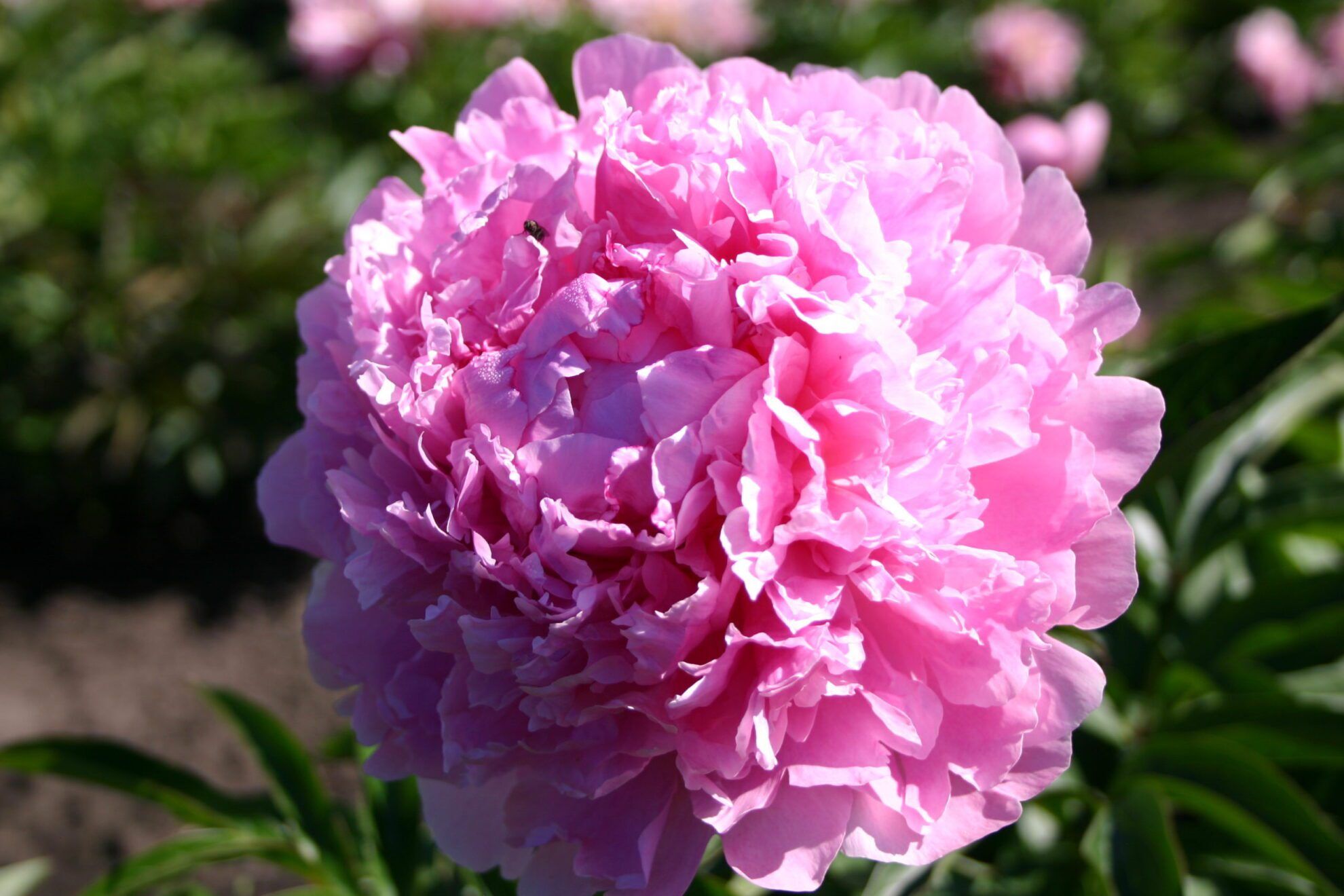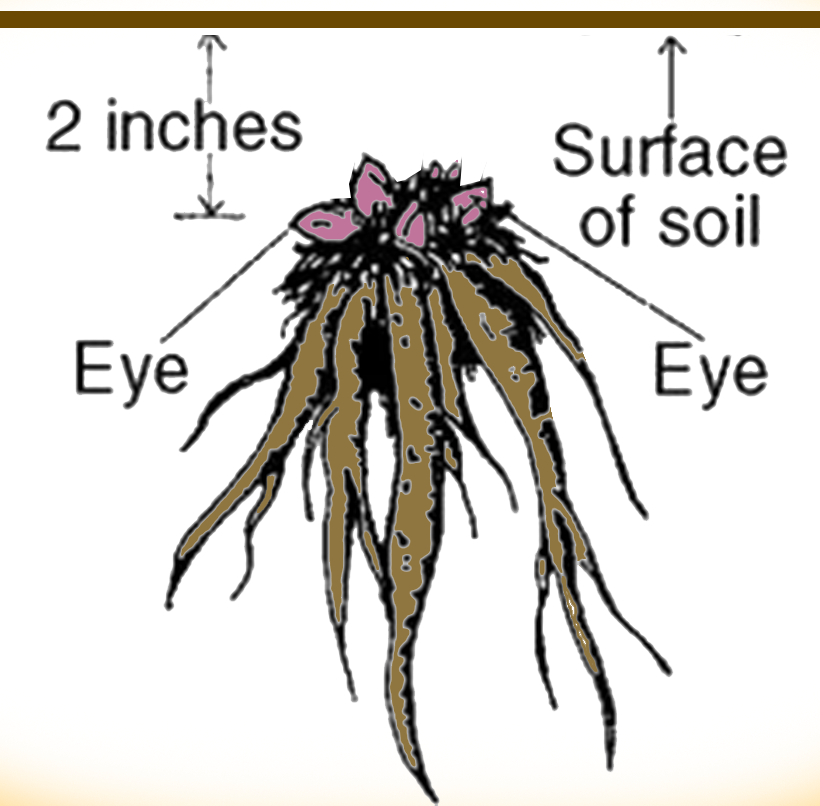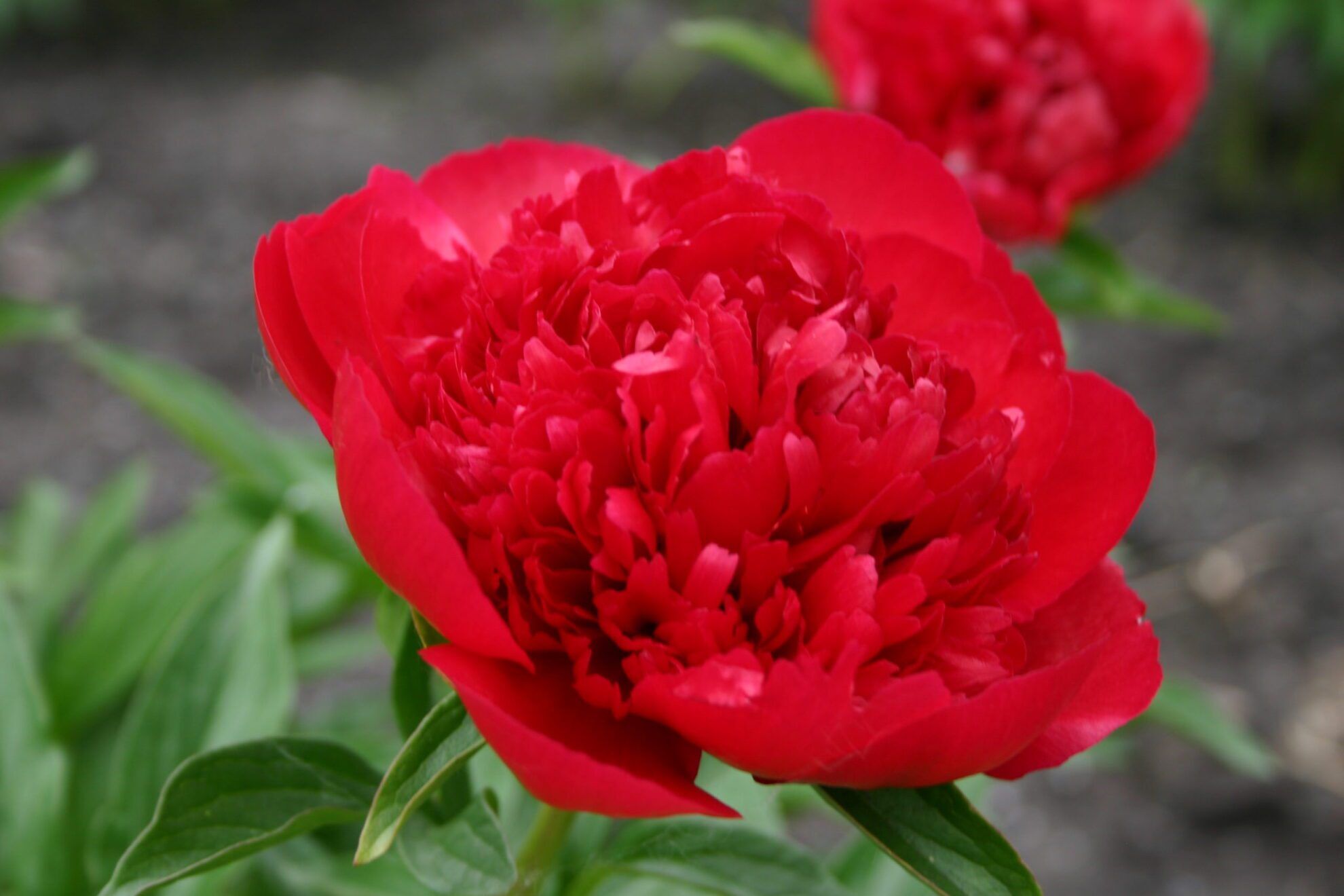Peonies are a great, low-maintenance flower for gardeners who do not like to replant their gardens each spring. The peony plant is capable of blooming each year for 50 years or more. Plant your peony in well-draining, nutrient-rich soil at the correct depth, and you will be able to enjoy the flowers with minimal care for many years.
Plants Arrive: Plant your peony roots as soon as possible when you receive them from Parkland Peonies. If you are not able to plant peonies right away, place your roots in a cool area; cool garage or refrigerator works great. We advise you get them into the ground as soon as possible, as they are living plant material.
Plant in fall: Peonies thrive best when planted in fall, before the first hard frost. Peonies may be planted in the spring, but these plants tend to grow more slowly, may not bloom for a year or 2.
Choose a location: A location that receives 6-8 hours of sunlight each day. If this is not available, peonies can still grow in areas with less sunlight, but their growth and bloom will be reduced.
Enriching Soil: Dig a hole 12 inches deep and equally wide. Peonies do not need to be planted this deep; amend the soil with composted material, well-aged manure and some peat moss, mix together well. This will help your soil stay moist longer and provide nutrients for your peony.
Plant: Plant your peony roots so the buds are 2 in. (5 cm) from the surface. Place the peony tubers in the hole, with the small buds or “eyes” pointed upward, and the long roots pointed downward. The buds should be no more than 2 in. (5 cm) from the surface, or the plant may not bloom for you in the future. It is okay if a few buds are oriented sideways, as they will reorient themselves once they start to grow. Planting your root upside-down will not guarantee the plant will survive and produce flowers.
Water: Give the newly planted tubers a thorough watering to help the soil settle around them. Until the first frost, keep the soil moist, but not soggy. This will also encourage peony feeder roots to start growing before winter sets in, which is essential for good plant growth in spring. Keep your newly planted peony root watered throughout the following season for best results.
Flowering: Once established, you can enjoy your peony plant for many years.
Planting good quality root stock from a peony grower is essential for great quality and selection of plant material. These instructions can also be used to plant interdivisional (ITOH) peony roots.
To learn more about peonies, and enjoy the company of like-minded peony growers, consider joining the Canadian Peony Society. www.peony.ca



Peonies usually need a few years to establish themselves, bloom, and grow. After a period of 2 or 3 years, peonies are very long lived perennials, blooming bigger and better as your garden progresses. Unlike other perennials, peonies don’t need to be dug and divided very often. They can be dug if desired every 10-12 years, shared with family and friends. Dividing your peonies returns the vigor back into your peony plant, as it is forced to grow a whole new root system.
- 10-10-10 fertilizer. Work the soil well before you plant, mixing in compost and a little fertilizer, and that should be enough.
- If your soil is poor, or your peony has been in the same location for many years, it’s time to apply fertilizer (bonemeal, compost, or well-rotted manure, or synthetic) is early spring, before the plants emerge in spring, a second application of fertilizer can be applied two weeks before flowers bloom. Don’t fertilize more than 2 times per years, using less than 2 tablespoons for each application.
- Help the stems. If peonies have any structural weakness, it is their stems, which are sometimes not strong enough to support their gigantic blossoms. Consider metal peony rings or wire tomato cages that allow the plant to grow through the center of the support.
- Deadhead peony blossoms as soon as they begin to fade, cutting to a strong leaf so that the stem doesn’t stick out of the foliage. Cut the foliage to the ground in the fall to avoid any overwintering diseases.
- Don’t smother peonies with too much mulch. Where cold temperatures are severe, for the first winter after planting you can mulch VERY loosely with leaves or shredded bark. Remove mulch in the spring.


